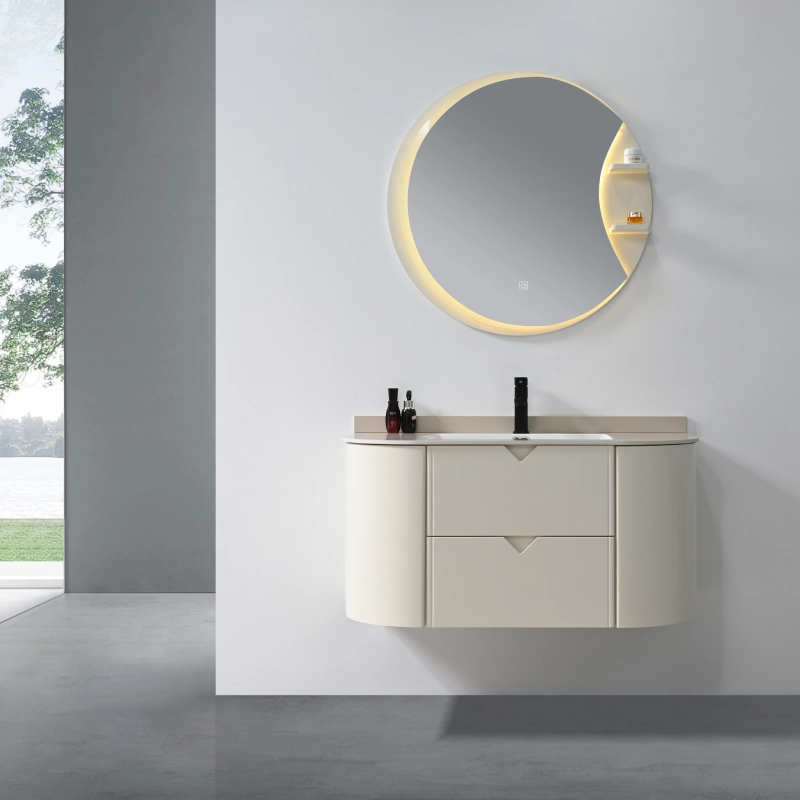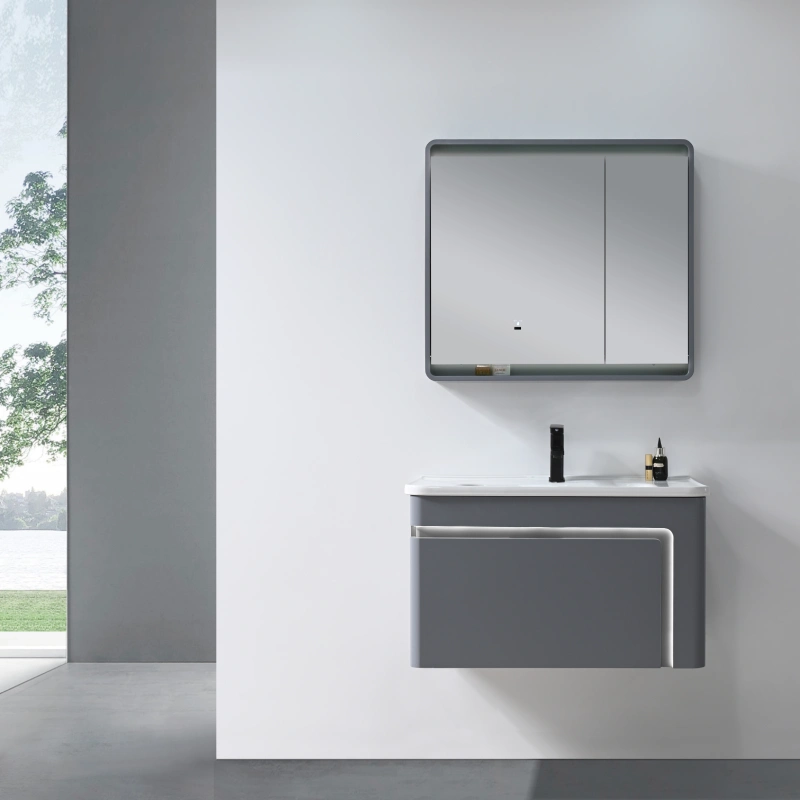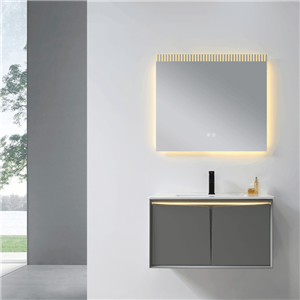Custom Bathroom Vanities: How Manufacturers Meet Unique Customer Needs
Custom bathroom vanities have become a hallmark of modern bathroom design, offering unparalleled flexibility and personalization. Unlike standard vanities, which come in pre-determined sizes and styles, custom bathroom vanities are designed to meet the specific needs and preferences of the homeowner. This level of customization ensures that every aspect of the vanity, from its dimensions to its materials and finishes, aligns perfectly with the overall bathroom decor and the user’s functional requirements.
Importance of Customization in Modern Bathrooms
In today's home design landscape, customization is key. Homeowners are increasingly seeking out ways to make their living spaces unique and reflective of their personal style. Custom bathroom vanities play a crucial role in this trend. They allow for the creation of a bathroom that not only looks aesthetically pleasing but also functions efficiently according to the specific needs of the household. This blend of form and function is why custom bathroom vanities are becoming an essential feature in modern homes.
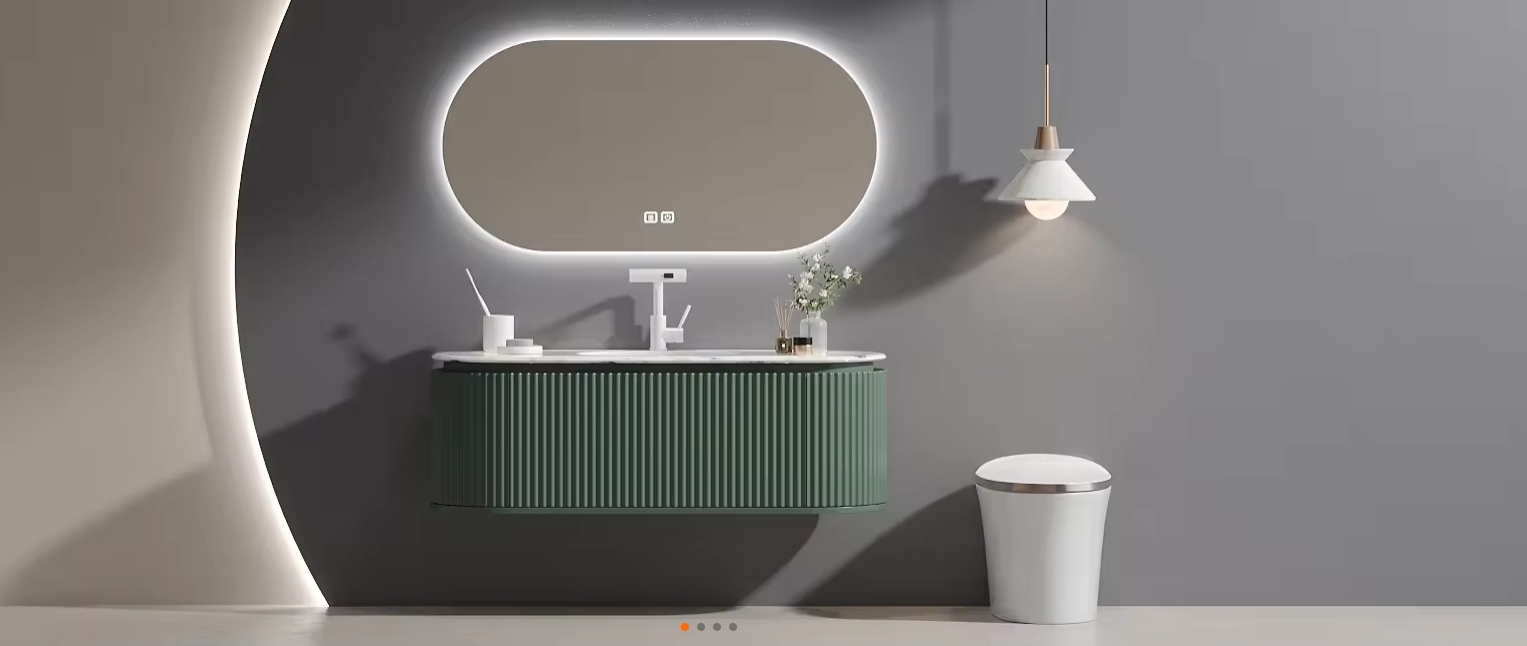
What are Custom Bathroom Vanities?
Custom bathroom vanities are specially designed and manufactured units tailored to the unique specifications of the homeowner. These vanities differ from off-the-shelf options in several ways:
Dimensions: Custom vanities can be made to fit any space, from compact powder rooms to expansive master bathrooms.
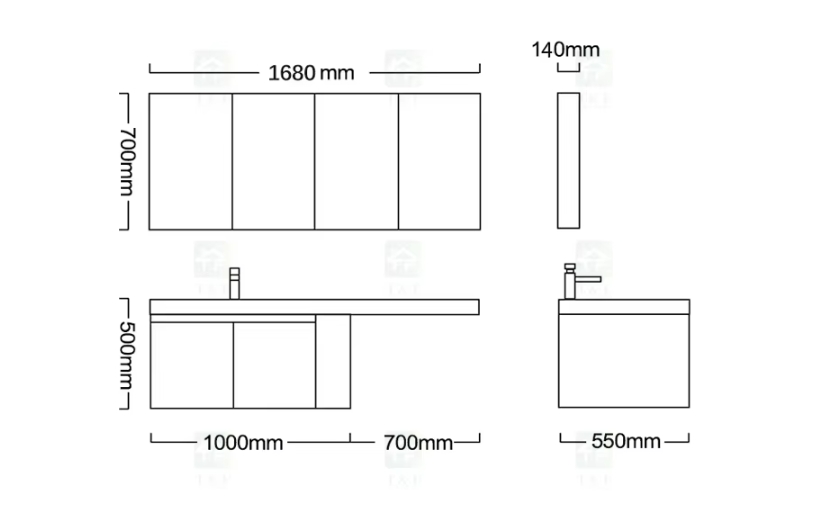
Materials: Homeowners can choose from a variety of materials, including wood, stone, metal, and composite, ensuring the vanity complements the rest of the bathroom decor.

Design Elements: From the number and placement of drawers and cabinets to the style of the hardware and the finish, every detail can be customized. 1. LED Mirrors, 2. Side Cabinet Or Shelf, 3. Basin, 4. Countertop, 5. Main Bathroom Cabinet.
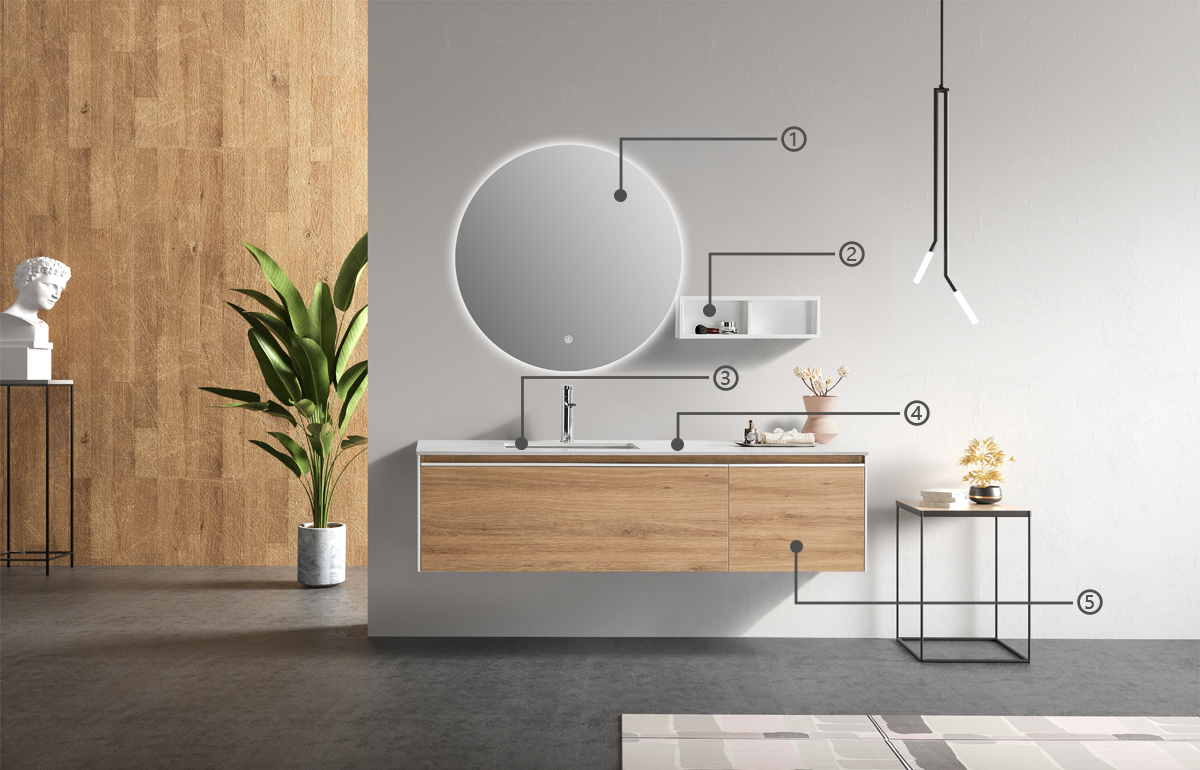
Differences Between Custom and Standard Vanities
The primary distinction between custom and standard vanities lies in their flexibility. Standard vanities are mass-produced, with limited options for size, style, and material. They are designed to appeal to a broad audience, making them a convenient and often cost-effective choice for quick renovations. However, they may not fit perfectly in all spaces or meet specific design preferences.
In contrast, custom bathroom vanities are made to order. This means that they can be tailored to fit unique spaces, such as irregularly shaped bathrooms or areas with specific layout constraints. Additionally, the ability to choose materials and finishes allows homeowners to create a truly personalized piece that enhances the overall aesthetic and functionality of their bathroom.
How to Choose the Right Custom Bathroom Vanities
Factors to Consider: Size, Style, and Material
Choosing the right custom bathroom vanity involves several key considerations:
Size: The size of the vanity should be proportional to the bathroom. Measure the available space carefully, taking into account the placement of plumbing fixtures, electrical outlets, and other elements. For smaller bathrooms, a 30 inch bathroom vanity can provide ample storage and counter space without overwhelming the room.
Style: Consider the overall style of your bathroom. Whether you prefer a modern, minimalist look or a more traditional, ornate design, your vanity should complement the existing decor. Look at elements such as the shape of the sink, the design of the cabinet doors, and the type of hardware.
Material: The choice of material will impact both the appearance and durability of the vanity. Popular options include solid wood for a classic look, engineered wood for cost-effectiveness, and natural stone for a luxurious feel. Each material has its pros and cons in terms of maintenance, durability, and cost.
Tips for Matching Vanities with Existing Bathroom Decor
To ensure your custom vanity enhances your bathroom decor, consider the following tips:
Consistency: Match the vanity’s style and finish with other elements in the bathroom, such as the flooring, wall tiles, and fixtures. This creates a cohesive look.
Contrast: Alternatively, you can create a striking contrast by choosing a vanity in a bold color or unique finish that stands out against more neutral bathroom elements.
Functionality: Make sure the design of the vanity does not compromise functionality. For example, ensure there is enough counter space for daily essentials and that drawers and cabinets are easily accessible.
How Manufacturers Design Custom Bathroom Vanities
The Design Process: From Concept to Final Product
Designing custom bathroom vanities involves several stages:
Consultation: The process begins with a consultation between the homeowner and the manufacturer. This is an opportunity to discuss ideas, preferences, and requirements.
Design Development: Based on the initial consultation, the manufacturer creates design concepts. These may include sketches, 3D models, or physical samples to help visualize the final product.
Material Selection: Once the design is finalized, the homeowner selects the materials. This includes choosing the type of wood, stone, or composite for the vanity, as well as the finishes and hardware.
Production: The custom vanity is then manufactured according to the approved design and material specifications. This stage involves cutting, assembling, and finishing the vanity to ensure it meets the highest standards of quality and craftsmanship.
Installation: After the vanity is completed, it is delivered and installed in the homeowner’s bathroom. The manufacturer may provide installation services or recommend professional installers.
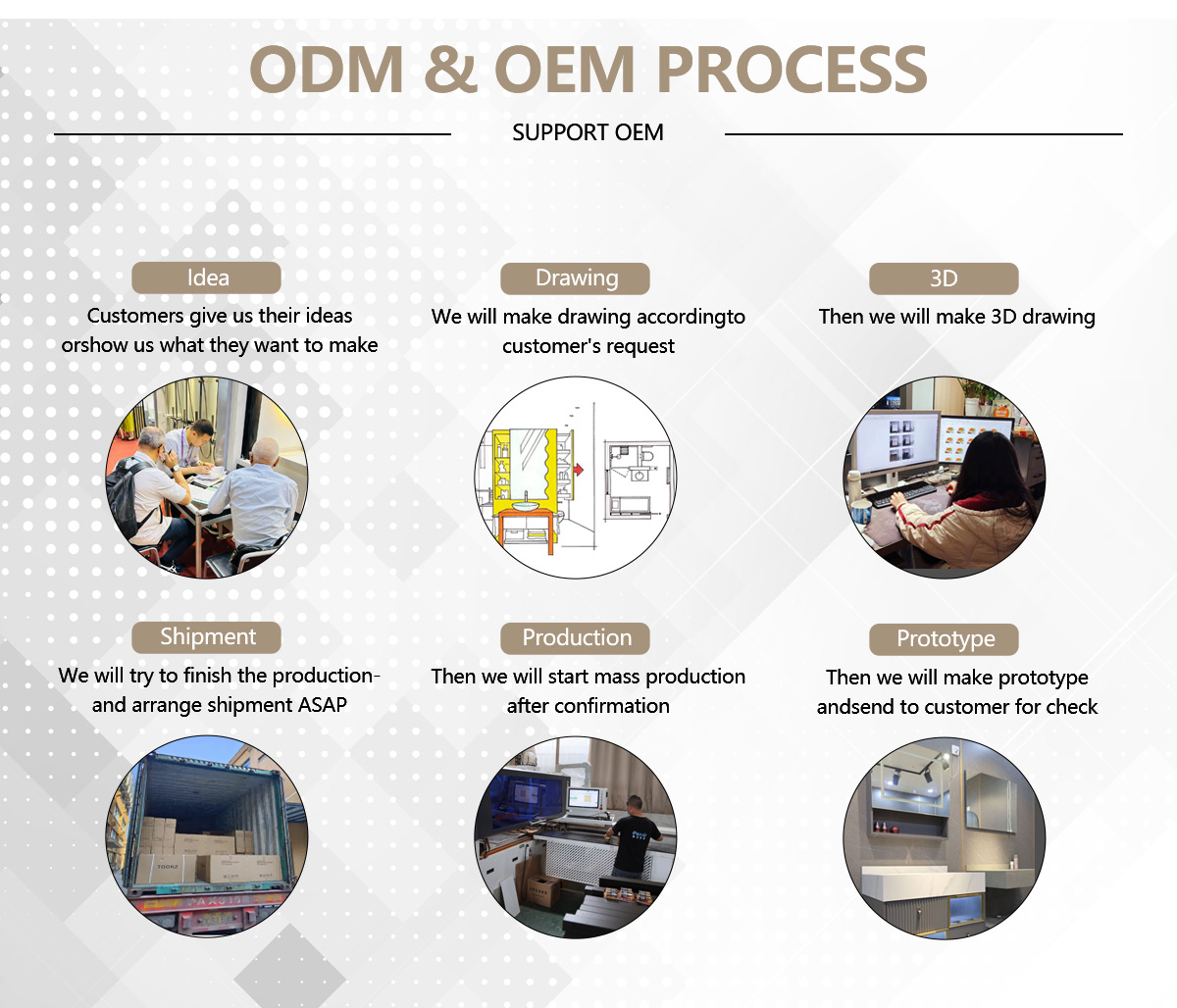
Importance of Collaboration Between Clients and Manufacturers
Collaboration is crucial in the custom vanity design process. Clear communication between the client and the manufacturer ensures that the final product meets expectations. Homeowners should feel comfortable sharing their ideas and feedback throughout the process, while manufacturers should be open to suggestions and provide expert guidance. This collaborative approach helps to create a custom bathroom vanity that is both beautiful and functional.
What Materials are Best for Custom Bathroom Vanities?
Comparison of Popular Materials: Wood, Stone, and Composite
Choosing the right material is essential for the longevity and appearance of your custom vanity. Here are some common materials and their characteristics:
Wood: Solid wood, such as oak, maple, or walnut, offers a timeless look and exceptional durability. It can be stained or painted in various finishes to match any decor. However, wood requires regular maintenance to prevent moisture damage and warping.
Stone: Natural stone, like marble or granite, provides a luxurious and elegant appearance. It is highly durable and resistant to scratches and heat. Stone vanities require sealing to protect against staining and moisture penetration.
Composite: Engineered materials, such as MDF (medium-density fiberboard) or plywood, are cost-effective alternatives to solid wood. They offer good durability and can be finished to mimic the appearance of natural wood or other materials. Composites are less prone to warping but may not be as long-lasting as solid wood or stone.
Pros and Cons of Each Material
Wood:
Pros: Timeless aesthetic, customizable finishes, durable with proper care.
Cons: Susceptible to moisture damage, requires regular maintenance.
Stone:
Pros: Luxurious look, highly durable, heat and scratch-resistant.
Cons: Expensive, requires sealing and maintenance to prevent staining.
Composite:
Pros: Cost-effective, versatile finishes, resistant to warping.
Cons: May not be as durable as solid wood or stone, can be damaged by excessive moisture.
How Custom Bathroom Vanities Improve Functionality
Custom Storage Solutions: Maximizing Space Efficiency
One of the main benefits of custom bathroom vanities is the ability to create tailored storage solutions. This can include:
Drawers and Cabinets: Customizable in terms of size, shape, and number to fit your storage needs.
Pull-Out Shelves: For easy access to toiletries and cleaning supplies.
Built-In Organizers: Such as dividers, trays, and bins to keep items neatly arranged.
By optimizing the use of available space, custom vanities can significantly enhance the functionality of your bathroom, making it easier to keep the area organized and clutter-free.
Integrating Modern Features: Technology and Accessibility
Modern custom vanities can incorporate a range of advanced features to improve convenience and accessibility:
Smart Storage: Hidden compartments and innovative storage solutions that maximize space and accessibility.
Integrated Lighting: Built-in LED lights for better visibility and ambiance.
Touchless Faucets: For a more hygienic and convenient user experience.
Accessible Design: Features such as lowered countertops and easy-to-reach storage for users with mobility challenges.
Why Custom Bathroom Vanities are Worth the Investment
Long-Term Benefits of Customization
Investing in a custom bathroom vanity offers several long-term benefits:
Personalized Design: A custom vanity is tailored to your specific needs and preferences, ensuring it fits perfectly in your space and matches your style.
Enhanced Functionality: Custom storage solutions and modern features can make your bathroom more efficient and user-friendly.
Increased Home Value: High-quality, custom-designed bathroom vanities can enhance the overall value of your home, making it more appealing to potential buyers.
Cost vs. Value: Understanding the Investment
While custom bathroom vanities may have a higher upfront cost compared to standard options, their long-term value makes them a worthwhile investment. The increased functionality, aesthetic appeal, and durability of custom vanities contribute to their overall value. When considering the cost, it’s essential to weigh these benefits against the initial expense to determine the best choice for your needs and budget.
How to Maintain and Care for Custom Bathroom Vanities
Best Practices for Cleaning and Maintenance
Proper maintenance is crucial to keep your custom vanity looking and functioning its best:
Regular Cleaning: Use mild soap and water for daily cleaning. Avoid harsh chemicals that can damage the finish.
Protect from Moisture: Ensure proper ventilation in the bathroom to prevent moisture buildup. Wipe down surfaces regularly to avoid water damage.
Seal Stone Surfaces: If your vanity is made of natural stone, apply a sealant as recommended to protect against staining and moisture.
Preventing Common Issues: Moisture and Wear
To extend the life of your custom vanity, take steps to prevent common issues:
Moisture Control: Install a bathroom fan or dehumidifier to reduce humidity levels. Use bath mats and rugs to protect the vanity from water splashes.
Regular Inspections: Periodically check for signs of wear, such as cracks, chips, or peeling finishes. Address issues promptly to prevent further damage.
Gentle Use: Avoid placing heavy or sharp objects on the vanity surface to prevent scratches and dents.
How Manufacturers Ensure Quality in Custom Bathroom Vanities
Quality Control Processes in Manufacturing
Manufacturers employ rigorous quality control processes to ensure the highest standards in custom bathroom vanity production:
Material Selection: High-quality materials are chosen for their durability and aesthetic appeal.
Precision Craftsmanship: Skilled artisans and advanced machinery are used to create precise cuts and finishes.
Final Inspection: Each vanity undergoes thorough inspection to check for any defects or imperfections before delivery.
Certifications and Standards to Look For
When selecting a manufacturer for your custom bathroom vanity, look for certifications and standards that indicate quality and reliability:
ISO Certification: Indicates adherence to international quality management standards.
Sustainable Practices: Certifications such as FSC (Forest Stewardship Council) for wood products or LEED (Leadership in Energy and Environmental Design) for eco-friendly manufacturing.
Customer Reviews: Positive feedback and testimonials from previous clients can provide insight into the manufacturer’s reputation and quality of work.
Get Free Quote From Ayala Vanity
Recap of the Benefits of Custom Bathroom Vanities
Custom bathroom vanities offer a range of benefits, from personalized design and enhanced functionality to long-term durability and increased home value. By choosing a custom vanity, homeowners can create a bathroom that meets their specific needs and preferences, ensuring a perfect blend of style and practicality.
Final Thoughts on Selecting the Perfect Vanity for Your Needs
When selecting a custom bathroom vanity, consider factors such as size, style, and material to ensure it complements your bathroom decor and meets your functional requirements. Work closely with a reputable manufacturer to design and create a vanity that reflects your unique taste and enhances the overall appeal of your bathroom.
Decor Cabinet Meaning From Wiki

